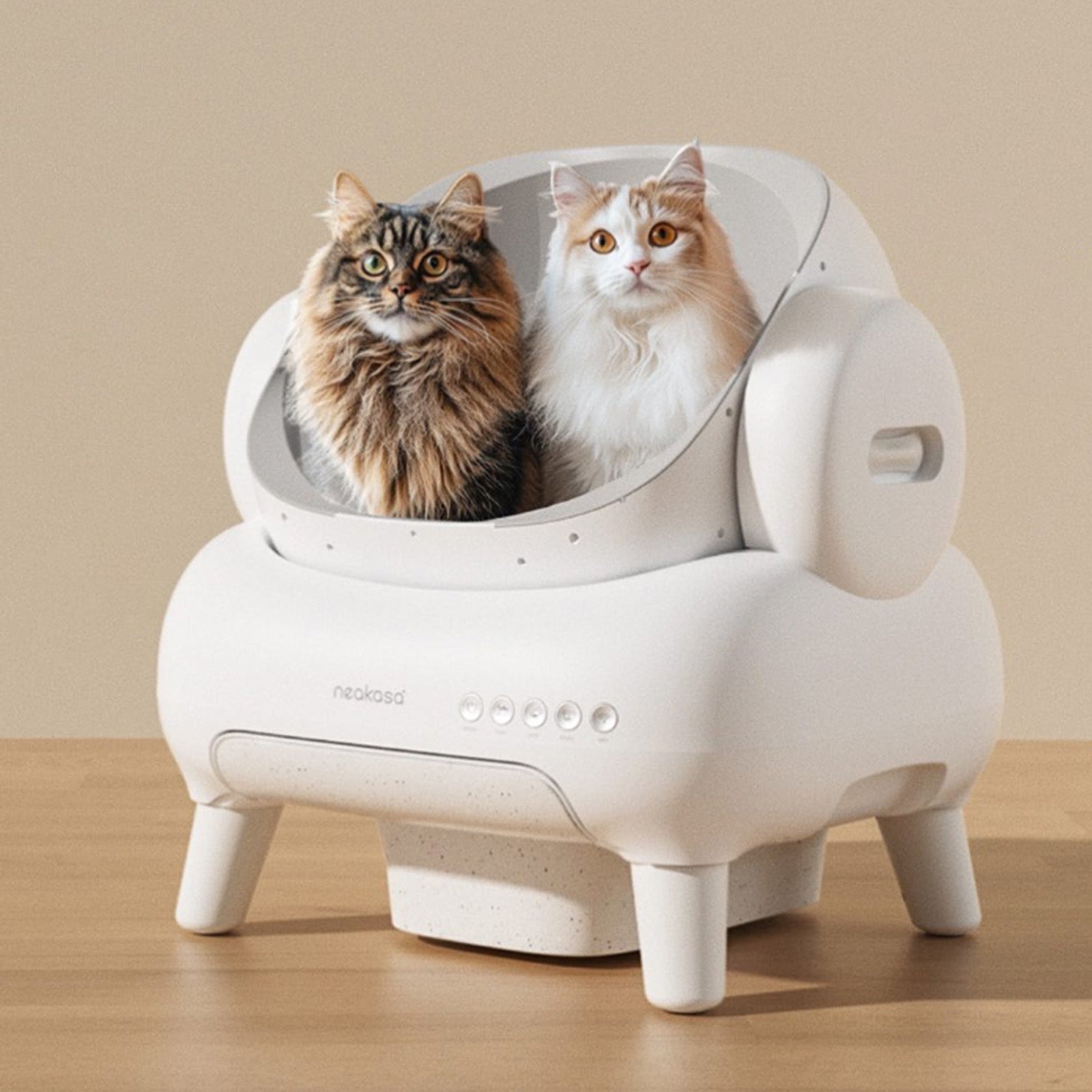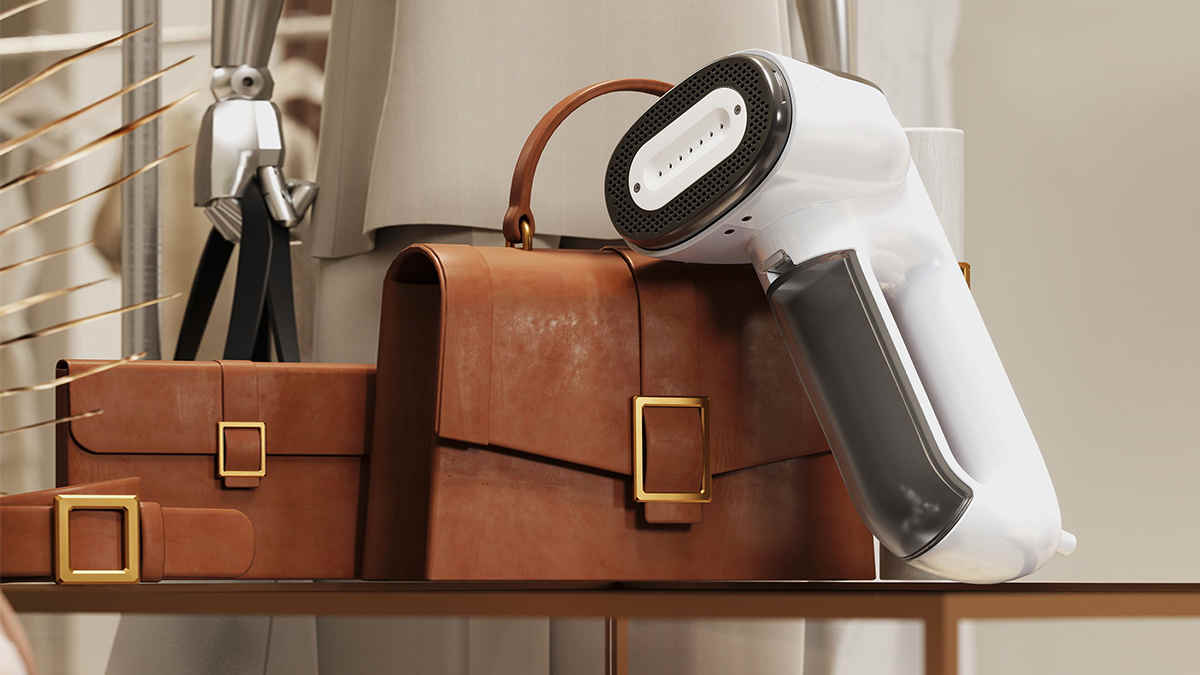Have you ever seen a cat with wool-like curls that make you want to reach out and touch them? Curly-haired cats stand out in the feline world with their distinctive look that resembles a teddy bear more than a traditional cat.
Unlike their straight-haired cousins, curly-haired cats need extra attention to keep their special coats healthy and mat-free. Thankfully, modern pet care technology has evolved to make this task much easier. This article will explain several popular curly hair cat breeds and how to groom your curly hair cat.
Part 1: What Are the Most Popular Curly-Haired Cat Breeds
Selkirk Rex: The Teddy Bear Cat
Did you know that Selkirk Rex cats are sometimes affectionately called 'cats in sheep's clothing' because their thick, curly fur truly looks like a lamb's wool! And even their whiskers can be curly!
The Selkirk Rex stands out with its plush, woolly curls covering its entire body. These cats look like they just stepped out of a stuffed animal collection! Their thick, soft curls come in all colors and patterns, making each Selkirk Rex uniquely beautiful.
Selkirk Rex cats are known for their patient, loving nature. They enjoy cuddles but aren't overly demanding of attention. These gentle giants are perfect for families with children or other pets.

Cornish Rex: The Elegant Athlete
The Cornish Rex sports a short, wavy coat that feels like crushed velvet. Their fur consists only of the soft undercoat, lacking the typical guard hairs of most cats. This gives them a distinctive rippled appearance that's especially noticeable along their backs.
With their slender build and soft curls, Cornish Rex cats are often described as 'greyhounds of the cat world' or 'little sprites.' These cats are the acrobats of the cat world! Cornish Rex cats stay playful well into adulthood. They're incredibly social, intelligent, and will follow you everywhere. If you want a cat that acts more like a dog, the Cornish Rex might be your perfect match.
Despite their fine coats, Cornish Rex cats aren't actually hypoallergenic—though they may produce fewer allergens than some other breeds.

Devon Rex: The Pixie Cat
With their large ears, wide-set eyes, and wavy coat, Devon Rex cats look like they came straight from a fantasy book. Their fur is even shorter than the Cornish Rex, with loose curls that give them an elfin appearance.
Devon Rex cats are mischievous, playful, and extremely affectionate. They form strong bonds with their humans and are known for finding warm spots to curl up—often on your shoulder or under blankets.
With their large ears and curly fur, they are often playfully nicknamed 'alien cats' or 'pixies.' They are highly intelligent and can even learn simple commands, just like dogs!

LaPerm: The Natural Curly
The LaPerm sports a unique, bouncy curly coat that can range from tight ringlets to loose waves. What makes them special is that their curls developed naturally from a spontaneous mutation on an Oregon farm in 1982.
LaPerms are moderate in activity level—not too hyper, not too lazy. They're affectionate without being clingy and adapt well to different living situations. These cats are known for using their paws like hands to investigate objects.
LaPerm kittens can be born completely bald and develop their curly coats as they grow!

Part 2: Why You Need to Groom Curly-Haired Cats
While curly-haired cats are undeniably charming, their special coats come with unique grooming requirements. Understanding these needs is essential for keeping your curly companion healthy and comfortable.
Tangles and Mats: A Hidden Problem
Even though some curly breeds like the Devon Rex may be less prone to severe matting due to their shorter coats, regular brushing remains crucial. Curly fur can tangle in ways that straight fur doesn't, especially in areas where the cat rubs against surfaces or in spots they can't easily reach during self-grooming. Left unattended, these tangles can develop into painful mats that pull on the skin.
Brushing your curly-haired cat 2-3 times a week with the right tools prevents these problems before they start. For some breeds like the Selkirk Rex with thicker curls, you might need more frequent sessions.
Dander and Oil Buildup: The Invisible Issue
The unique structure of curly fur creates more places for natural oils and dander to accumulate. This can lead to skin irritation for your cat and potentially trigger allergies in humans. The spiral nature of curly hair traps these substances close to the skin rather than allowing them to be distributed throughout the coat or shed naturally.
Regular grooming helps remove this buildup, keeping your cat's skin healthy and reducing allergens in your home. This is particularly important for breeds like the Cornish Rex, whose fine, close-to-the-body coat can trap oils more readily.
Shedding Season Surprises
The myth that curly-haired cats don't shed is just that—a myth! While some may shed less noticeably than straight-haired cats, they still lose hair, especially during seasonal changes. The difference is that curly hair often gets caught in the remaining coat rather than falling freely onto your furniture.
This "hidden shedding" can create more mats if not addressed through regular grooming. Removing this loose hair proactively helps maintain coat health and reduces hairballs, which can be particularly problematic for curly-haired cats who ingest more loose fur during self-grooming.
The Health Connection
Beyond aesthetics, proper grooming for curly-haired cats directly impacts their physical well-being. Regular grooming sessions allow you to check for skin issues that might be hidden under those beautiful curls, such as parasites, dry patches, or small injuries. Additionally, the grooming process stimulates blood circulation to the skin and distributes natural oils, keeping the coat lustrous and healthy.

Part 3: Neakasa: Your Ideal Grooming Companion for Curly-Haired Cats
Given the unique fur characteristics of curly-haired cats, finding the right grooming solution can make all the difference between a stressful chore and a bonding experience. The Neakasa pet grooming vacuum was designed with these special needs in mind, offering a comprehensive approach to curly coat maintenance.
Powerful Suction: The Key to Effective Grooming
Curly-haired cats present a unique challenge: their fur traps loose hair instead of shedding it onto surfaces where you can clean it up. The Neakasa's powerful yet adjustable suction tackles this problem head-on by extracting loose hair directly from the coat. This prevents the trapped hair from forming mats while simultaneously reducing the amount of fur that ends up on your furniture, clothes, and floors.
The vacuum's strength is particularly valuable during seasonal shedding periods when even curly-haired breeds experience increased hair loss. Instead of these loose hairs becoming entangled in the remaining curls, they're efficiently removed before causing problems.
Multiple Attachments: Customized Care for Every Curl Type
Not all curly coats are created equal—the tight ringlets of a Selkirk Rex require different handling than the wavy coat of a Devon Rex. Neakasa addresses this with specialized attachments designed for different curl patterns and body areas:
- The grooming brush gently smooths and detangles curly coats, while massaging the skin to boost circulation and promote a healthy shine—perfect for pampered purrs during grooming time.
- The cleaning brush picks up stray hairs left behind after grooming, catching stubborn curls from couches, beds, and your favorite sweater—so cleanup stays as tidy as your cat.
- The deshedding tool glides through dense undercoats to lift away loose curls and prevent matting, all while encouraging healthy skin with each stroke—ideal for managing shedding without stress.
This versatility makes the Neakasa suitable for all curly-haired breeds, allowing you to customize the grooming experience to your specific cat's needs.
Quiet Design: Reducing Stress Factors
One of the biggest challenges in pet grooming is noise-related anxiety. Traditional vacuums can frighten even the most laid-back cats with their loud motors. The Neakasa operates at a significantly reduced noise level while maintaining powerful suction, making it less intimidating for noise-sensitive curly-haired breeds like the Devon Rex.
The quiet operation allows you to groom your cat without triggering stress responses, turning grooming time into a peaceful experience rather than a frightening one.
Easy to Clean: Maintaining Hygiene
After collecting all that fur, dander, and skin particles, the Neakasa makes disposal simple with its easy-to-empty collection chamber. This hygienic system prevents you from having to handle the collected debris directly and keeps your grooming area clean.
The washable filters and attachments ensure that you're always grooming your curly-haired cat with clean tools, reducing the risk of skin irritations or infections that could hide under those beautiful curls.
Part 4: How to Easily Groom Your Curly-Haired Cat with Neakasa
Establishing a positive grooming routine is essential for maintaining your curly-haired cat's coat health. Here's how to make the most of your Neakasa pet grooming vacuum:
Step 1: Choose the Right Attachment
For most curly-haired cats, start with these guidelines:
- Selkirk Rex: Use the grooming brush to detangle thick curls, then the deshedding tool to reduce undercoat buildup.
- Cornish Rex: The grooming brush on a low setting works best for their short, wavy coat—gentle and effective.
- Devon Rex: Start with the soft grooming brush on the lowest setting to protect delicate fur; trim only when needed.
- LaPerm: Switch between the grooming brush and deshedding tool depending on curl density; finish with the cleaning brush for loose hairs.
Remember that individual cats may have different preferences regardless of breed. Pay attention to your cat's reactions and adjust accordingly.
Step 2: Set the Perfect Suction Level
Always start with the lowest suction setting when introducing your cat to the Neakasa. You can gradually increase power as your cat becomes comfortable with the experience. Areas with thinner fur (like the belly or inside of legs) generally require less suction than thicker areas (like the back or tail).
For curly-haired breeds with fine coats like the Devon Rex or Cornish Rex, keep the suction lower to avoid pulling on their delicate fur. For denser curls like those of the Selkirk Rex, you may need higher suction to effectively remove trapped hair.
Step 3: Start in Comfort Zones
Begin grooming in areas where your cat enjoys being touched—usually along the back or under the chin. This creates a positive association with the Neakasa. Use short, gentle strokes in the direction of hair growth, working your way through these steps:
- First, let your cat investigate the turned-off device
- Turn it on nearby but don't use it on them yet
- Use it briefly on their favorite petting spot
- Gradually extend grooming time and areas
This slow introduction is particularly important for curly-haired cats who may not have experienced the sensation of having their unique coats groomed with a vacuum device before.
Step 4: Master the Technique
For curly coats, the grooming technique differs from straight-haired cats:
- Use a section-by-section approach rather than trying to cover large areas at once
- Gently separate curls with your fingers before using the Neakasa attachment
- Move in the direction of hair growth, never against it
- Pay special attention to areas prone to matting: behind the ears, armpits, groin, and base of the tail
- Keep sessions short (5-10 minutes) but frequent (2-3 times weekly)
Step 5: Reward and Reinforce
Make grooming a positive experience by offering treats, praise, or play sessions immediately afterward. Many curly-haired cats learn to enjoy their grooming routine when it's consistently paired with positive outcomes.
Step 6: Maintain Your Neakasa
For optimal performance:
- Empty the collection chamber after each use
- Clean filters weekly
- Wash attachments with mild soap and water as needed
- Check for hair wrapped around brush components
Beyond the Vacuum: Complete Care for Curly Coats
While the Neakasa handles the bulk of your curly cat's grooming needs, complement it with:
- Occasional baths with cat-specific shampoo (every 6-8 weeks)
- Regular nail trims to prevent accidental scratches during grooming
- A balanced diet rich in omega fatty acids to support skin and coat health
- Adequate hydration to prevent dry skin under those beautiful curls
Conclusion
Curly-haired cats like the Selkirk, Cornish, Devon, and LaPerm bring unique charm—and unique grooming needs. Their beautiful curls deserve gentle, effective care.
The Neakasa P0 Pet Grooming Vacuum makes grooming easier, safer, and more enjoyable for both you and your cat. From detangling to deshedding, it handles curly coats with care while reducing shedding at home.
Give your curly companion the comfort they deserve. Explore how the Neakasa P0 can become your go-to grooming solution today.










Leave a comment
This site is protected by hCaptcha and the hCaptcha Privacy Policy and Terms of Service apply.